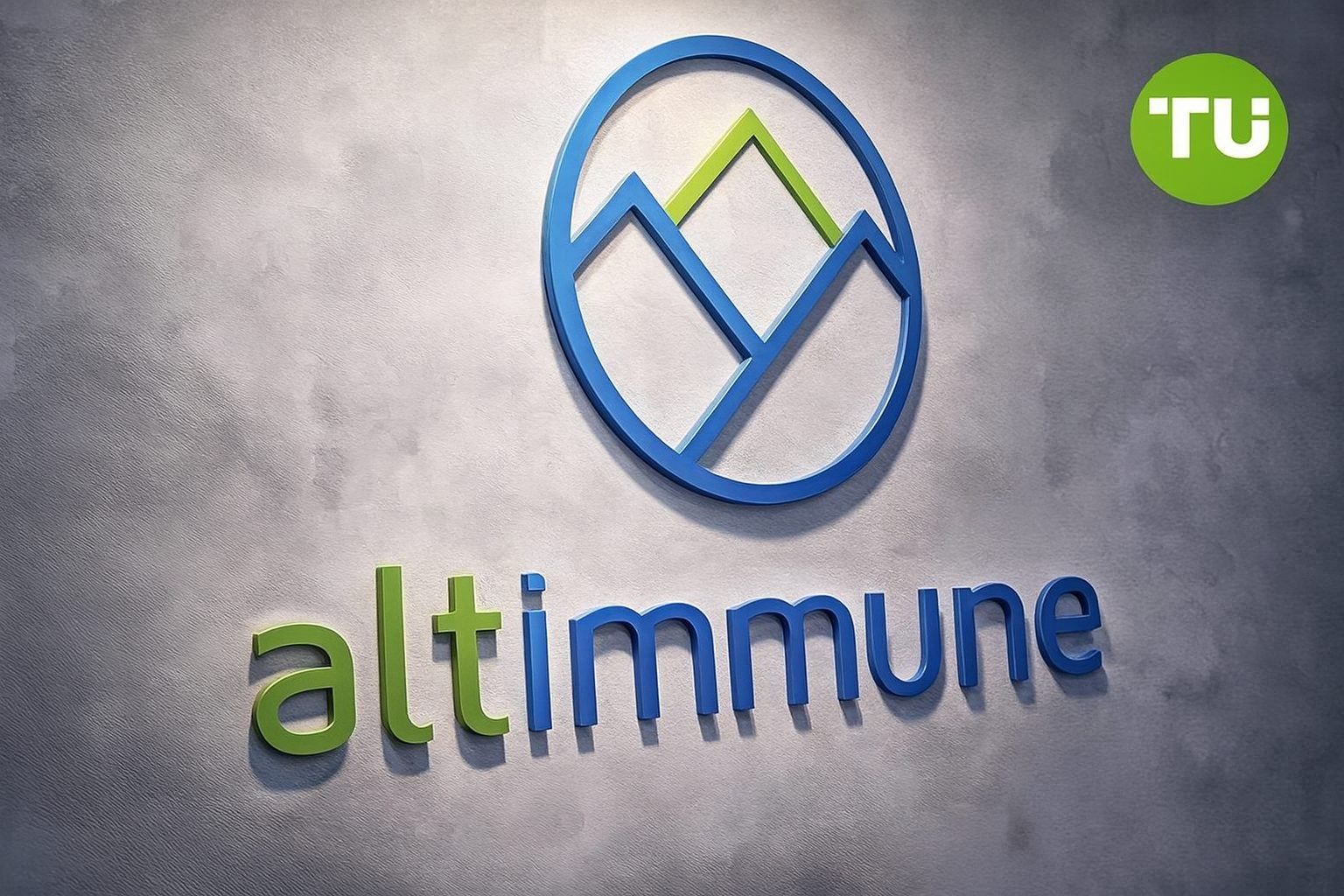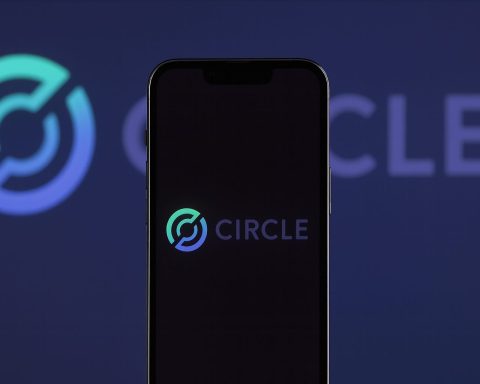Key Takeaways
- ALT stock is trading around the mid‑$5 range, after closing just above $5 on Monday, November 24, and is up roughly 20% over the last two weeks. [1]
- Altimmune’s lead drug, pemvidutide, just had its Phase 2b MASH data published in The Lancet and featured at AASLD’s Liver Meeting, reinforcing strong MASH resolution, weight loss and supportive fibrosis signals ahead of a key FDA End‑of‑Phase 2 meeting this quarter. [2]
- Despite positive clinical and cash runway updates, ALT stock faces overhang from multiple shareholder class actions and a new $400 million shelf registration that could lead to future dilution. [3]
ALT stock price today: how Altimmune is trading on November 25, 2025
Altimmune Inc. (NASDAQ: ALT) continues its November rebound. As of early trading on Tuesday, November 25, ALT is changing hands around $5.1 per share, roughly flat to slightly higher versus Monday’s close. Intraday ranges have been tight so far, with trading largely clustered between about $4.8 and $5.2 per share. [4]
On Monday, November 24, ALT:
- Opened near $4.81
- Traded between $4.80 and $5.19
- Finished around $5.1–$5.13 with volume above 3.3 million shares [5]
According to short‑term technical data, ALT has risen in 6 of the last 10 trading days and is up almost 20% over the past two weeks, as traders reposition ahead of key clinical and regulatory catalysts. [6]
From a longer‑term perspective:
- 52‑week high: about $10.88 (December 4, 2024)
- 52‑week low: about $2.90 (June 26, 2025, immediately after the IMPACT topline release)
- At around $5.1, the stock is still down ~53% from its 52‑week high but up ~75% from the June low. [7]
Altimmune’s market capitalization sits in the roughly $0.5–0.55 billion “small‑cap biotech” range, depending on the exact intraday price. [8]
The core story: pemvidutide and the MASH opportunity
Altimmune is a late clinical‑stage biotech focused on liver and cardiometabolic disease. Its value is overwhelmingly tied to pemvidutide, a once‑weekly dual GLP‑1/glucagon receptor agonist being developed for:
- Metabolic dysfunction‑associated steatohepatitis (MASH)
- Alcohol use disorder (AUD)
- Alcohol‑associated liver disease (ALD) [9]
IMPACT Phase 2b MASH trial: big upside, nuanced data
On June 26, 2025, Altimmune released topline 24‑week data from its IMPACT Phase 2b MASH trial:
- The trial met its primary MASH resolution endpoint, with about 52–59% of pemvidutide‑treated patients achieving MASH resolution without worsening of fibrosis, versus roughly 19–20% on placebo (p < 0.0001). [10]
- Weight loss reached ~5–6% at 24 weeks, with no plateau observed in the treatment arms. [11]
- Fibrosis improvement showed numerically higher response rates vs placebo but did not reach traditional statistical significance at 24 weeks on the prespecified histologic endpoint, likely due to a higher‑than‑expected placebo response. [12]
- However, AI‑based digital pathology and multiple non‑invasive tests (ELF, VCTE, cT1, FAST score) indicated statistically significant reductions in fibrosis and liver inflammation, supporting an antifibrotic effect with longer treatment. [13]
These results were subsequently published in The Lancet and presented in a late‑breaking oral session at AASLD’s Liver Meeting 2025, further validating the dataset in the eyes of hepatology specialists. [14]
For investors, the read‑through is:
- Clinically, pemvidutide’s profile is increasingly differentiated: strong MASH resolution, meaningful weight loss, and favorable tolerability with very low discontinuation rates. [15]
- Statistically, the miss on the fibrosis histology endpoint at 24 weeks is a key nuance and has become central to both regulatory dialogue and shareholder litigation (more on that below). [16]
Upcoming MASH milestones that matter for ALT stock
Altimmune has laid out a stacked near‑term catalyst calendar for pemvidutide in MASH:
- End‑of‑Phase 2 (EoP2) FDA meeting:
- Scheduled for Q4 2025.
- Altimmune will seek alignment on Phase 3 trial design and acceptable endpoints, including a potential role for non‑invasive tests and AI‑based biopsy readouts. [17]
- 48‑week IMPACT data (NITs and weight loss):
- Expected before year‑end 2025.
- Longer treatment duration could strengthen the fibrosis signal and will be closely watched by both regulators and investors. [18]
The combination of the FDA meeting outcome and 48‑week dataset is likely to be the single biggest driver of ALT stock over the next few months. A clear path into Phase 3 with robust 48‑week data could materially rerate the name; a muddled signal or tougher guidance on endpoints could keep the stock under pressure.
Beyond MASH: AUD and ALD expand pemvidutide’s upside
Altimmune is also building a broader pemvidutide franchise:
- RECLAIM Phase 2 trial in Alcohol Use Disorder (AUD)
- RESTORE Phase 2 trial in Alcohol‑associated Liver Disease (ALD)
- A 48‑week study in about 100 patients, now underway. [22]
While MASH remains the primary value driver today, successful readouts in AUD and ALD could transform pemvidutide into a multi‑billion‑dollar liver and addiction platform, which is part of what longer‑term, bullish analysts are betting on. [23]
Financials and cash runway: Q3 2025 snapshot
For a small‑cap biotech, balance sheet strength and burn rate are as important as the science. In its Q3 2025 earnings report on November 6, Altimmune highlighted: [24]
- Cash, cash equivalents and short‑term investments:
- About $210.8 million as of September 30, 2025 (roughly 60% higher than at year‑end 2024).
- Q3 2025 net loss:
- $19.0 million, or –$0.21 per share, an improvement from a $22.8 million loss a year earlier.
- R&D expense:
- About $15.0 million in Q3, reflecting ongoing clinical work for pemvidutide.
- G&A expense:
- Roughly $5.9 million, up modestly year over year.
Altimmune also:
- Expanded its debt facility with Hercules Capital to $125 million and drew an additional $20 million. [25]
- Strengthened its leadership team, adding a new Chief Medical Officer, Chief Commercial Officer and Chief Legal Officer with deep experience in metabolic, liver and addiction medicine. [26]
Based on the current burn rate, the company appears to have multiple years of cash runway, particularly when including access to debt and at‑the‑market (ATM) equity tools—though that comes with a trade‑off: potential shareholder dilution.
Shelf registration and potential dilution risk
On November 6, 2025, Altimmune filed a Form S‑3 shelf registration allowing it to issue up to $400 million of securities (common stock, preferred, debt, warrants, and units) over time. [27]
Key details for ALT shareholders:
- The company flagged shares outstanding of roughly 104.3 million as of November 5, 2025, a notable increase from about 72 million at year‑end 2024, reflecting prior capital raises. [28]
- The shelf is paired with a new $200 million ATM program with Leerink Partners, giving Altimmune flexibility to raise equity as needed. [29]
For investors, this is a double‑edged sword:
- Positive: it materially reduces financing risk, helping fund Phase 3 trials and expanding programs without relying solely on partnerships.
- Negative: any substantial equity issuance at current prices would dilute existing shareholders, a major concern in a stock that has already seen significant volatility and share‑count expansion.
Litigation overhang: multiple class actions targeting IMPACT communications
Several shareholder rights law firms—including Levi & Korsinsky, Robbins LLP, Faruqi & Faruqi, Bragar Eagel & Squire and others—have filed or are pursuing class action lawsuits and investigations on behalf of investors who bought Altimmune stock between August 10, 2023 and June 25, 2025. [30]
The core allegation across these complaints:
- Altimmune and some of its executives allegedly misled investors about the strength and design of the IMPACT Phase 2b trial, particularly around the fibrosis endpoint.
- Law firm summaries highlight that, despite positive MASH resolution and weight loss data, the fibrosis improvement endpoint did not meet statistical significance, and that the market reaction—a single‑day share price drop of roughly 53% on June 26, 2025—shows how material this nuance was to investors. [31]
These lawsuits are in early stages and no court has ruled on the merits of the claims. Altimmune’s own disclosures focus on the positive aspects of IMPACT and the supportive non‑invasive and AI‑based fibrosis data, which it believes justify advancing to Phase 3. [32]
For ALT stock, the litigation:
- Adds a headline and sentiment overhang.
- Could lead to settlement costs down the line, though such outcomes are uncertain and often modest relative to market cap.
- Forces investors to weigh disclosure risk alongside scientific and regulatory risk.
Analyst ratings and ALT stock forecast: high upside, high uncertainty
Despite the volatility, Wall Street coverage remains broadly bullish on Altimmune:
- One survey of around 10 analysts shows an average 12‑month price target near $16–17, with targets generally clustered between $12 and $24. [33]
- Another dataset aggregating 13 analysts cites a median price target around $19, with a range from $1 to $28, and an overall rating near “Strong Buy” based on a majority of Buy ratings. [34]
- A separate source focused on recent calls pegs the average target around $13, still implying well over 100% upside from the current price. [35]
Depending on the sample, consensus implies roughly 170–300% potential upside over the next year versus today’s ~$5 price—IF the pemvidutide story plays out as hoped.
However:
- Such price targets bake in successful progression to Phase 3 in MASH, supportive 48‑week data, and continued progress in AUD/ALD.
- They also assume Altimmune can manage financing without excessively diluting shareholders and that litigation does not severely impact the company.
As always, these are forecasts, not guarantees, and analyst opinions can change quickly after new data or regulatory feedback.
Trading dynamics: volatility and short interest
ALT remains very much a “trader’s biotech”:
- The stock halved in a single day on June 26 after the IMPACT topline nuance on fibrosis hit the tape. [36]
- Over the past month, it has swung between the mid‑$3s and just above $5, driven by sentiment around upcoming catalysts. [37]
Short interest is also significant:
- As of October 31, 2025, about 21.8 million shares were sold short, against a free float a bit above 100 million, implying just over 20% of the float is shorted. [38]
This mix of:
- high short interest,
- binary‑ish clinical and regulatory catalysts, and
- a relatively small market cap
creates the potential for sharp squeezes in either direction as news hits.
What to watch if you’re following ALT stock today
For readers tracking ALT stock on November 25, 2025, here’s a practical checklist:
- Price action around $5
- Does the stock hold above the recent ~$4.5–4.8 support zone, or do sellers step in ahead of the 48‑week IMPACT readout?
- Updates on the FDA End‑of‑Phase 2 meeting
- Any press release summarizing Altimmune’s EoP2 discussions with the FDA—particularly around endpoints, non‑invasive tests, and Phase 3 design—will be crucial.
- Timing and tone of 48‑week IMPACT data
- Look for consistency between the longer‑term NIT/weight‑loss data and the already‑published 24‑week Lancet results. Stronger fibrosis signals would be a major positive; mixed signals could re‑ignite volatility. [39]
- Financing moves under the new shelf and ATM
- Monitor any announced equity raises or notable upticks in share count, as these could pressure the stock near‑term even if they extend cash runway. [40]
- Progress and commentary on class actions
- Significant milestones—like motions to dismiss being denied or settled, or any disclosures in SEC filings—could influence sentiment, even if the financial impact ends up modest. [41]
- Conference appearances and KOL reactions
- Investor conferences and hepatology/addiction KOL (key opinion leader) reactions to the Lancet publication and AASLD presentations may help shape the market’s view of pemvidutide’s competitive positioning. [42]
Bottom line
Altimmune’s ALT stock on November 25, 2025 sits at a crossroads:
- On one side, compelling clinical data, a deepening pemvidutide franchise in MASH, AUD and ALD, Fast Track designations, and a solid cash position give the bull case real substance. [43]
- On the other, missed statistical significance on a key fibrosis endpoint, ongoing shareholder litigation, heavy short interest, and the real possibility of further equity dilution keep many investors cautious. [44]
For traders and investors watching ALT today, the stock is best viewed as a high‑risk, high‑reward biotech tightly tethered to a handful of near‑term clinical and regulatory events. Anyone considering a position should carefully review Altimmune’s SEC filings, clinical data releases and risk factors—and, ideally, consult a qualified financial advisor—before making investment decisions.
References
1. finance.yahoo.com, 2. www.globenewswire.com, 3. www.globenewswire.com, 4. www.indmoney.com, 5. finance.yahoo.com, 6. stockinvest.us, 7. www.indmoney.com, 8. stockanalysis.com, 9. www.stocktitan.net, 10. www.globenewswire.com, 11. www.globenewswire.com, 12. www.globenewswire.com, 13. www.globenewswire.com, 14. www.globenewswire.com, 15. www.globenewswire.com, 16. www.globenewswire.com, 17. www.stocktitan.net, 18. www.stocktitan.net, 19. www.stocktitan.net, 20. www.stocktitan.net, 21. www.stocktitan.net, 22. www.stocktitan.net, 23. tickernerd.com, 24. www.stocktitan.net, 25. www.stocktitan.net, 26. www.stocktitan.net, 27. www.stocktitan.net, 28. www.stocktitan.net, 29. www.stocktitan.net, 30. www.globenewswire.com, 31. www.globenewswire.com, 32. www.globenewswire.com, 33. www.marketbeat.com, 34. tickernerd.com, 35. www.tipranks.com, 36. www.globenewswire.com, 37. markets.financialcontent.com, 38. finance.yahoo.com, 39. www.globenewswire.com, 40. www.stocktitan.net, 41. www.globenewswire.com, 42. www.globenewswire.com, 43. www.globenewswire.com, 44. www.globenewswire.com









